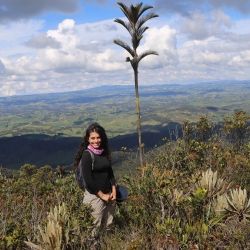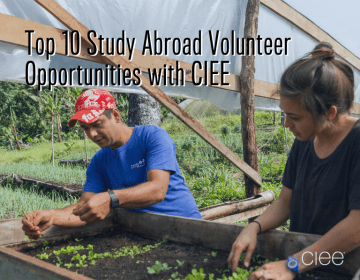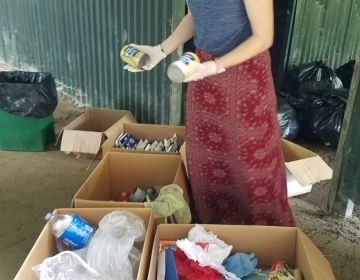Creation of an organic garden at the Monteverde Friends School
Written by Sabine Peterka (Macalester College), Internship on Sustainability and the Environment.
I spent the past four weeks working to transform a 50 square meter space overrun by an invasive grass into a productive garden at the Monteverde Friends School. Featuring edible, medicinal and native plants, the garden can now be used for sustainable food production and environmental education, showing students how nature takes care of us and how we can take care of nature.

The Monteverde Friends School is a private, bilingual school for grades kinder through 12. Founded in the 1950s when Quakers first settled Monteverde, it maintains quaker values including love, respect, simplicity and community. The area in which I worked has been planted intermittently, but never maintained long-term due primarily to staff turnover and the persistent stargrass.
Before beginning construction, my supervisor Felipe Negrini helped me through a design process. First, I learned about the school and interviewed students, teachers, staff and volunteers to learn about their hopes for the garden and what it had been used for in the past. I found that most people wanted to grow vegetables to sell in the school’s weekly fundraisers but were concerned about maintenance. With this in mind, I drew a conceptual design for the garden, including additional elements: a bench, path, water collector and fence. Meanwhile, we hired someone to help remove the stargrass so we could prepare the area for plants.

We collected plantlets and cuttings from the surrounding forest, the Monteverde Institute, the Bajo del Tigre reserve in the Children’s Eternal Rainforest and purchased some from a greenhouse. I also collected recycled materials such as tetra packs and cardboard toilet paper rolls in which I planted natives for people to take home for free.

The 5th/6th and 9th/10th-grade classes helped me with planting. It was great to bring students into the garden to engage with the project. About half the students have gardening experience and grow plants at home, while the activity was relatively new to the other half. To address the maintenance concern, I proposed ways in which the school could ensure care for the garden and detailed the instructions for its upkeep. The ideal solution would be to incorporate gardening into the school curriculum, however, this is not something I can control. I also compiled information on the uses, origin, and reproduction of each species in the garden.
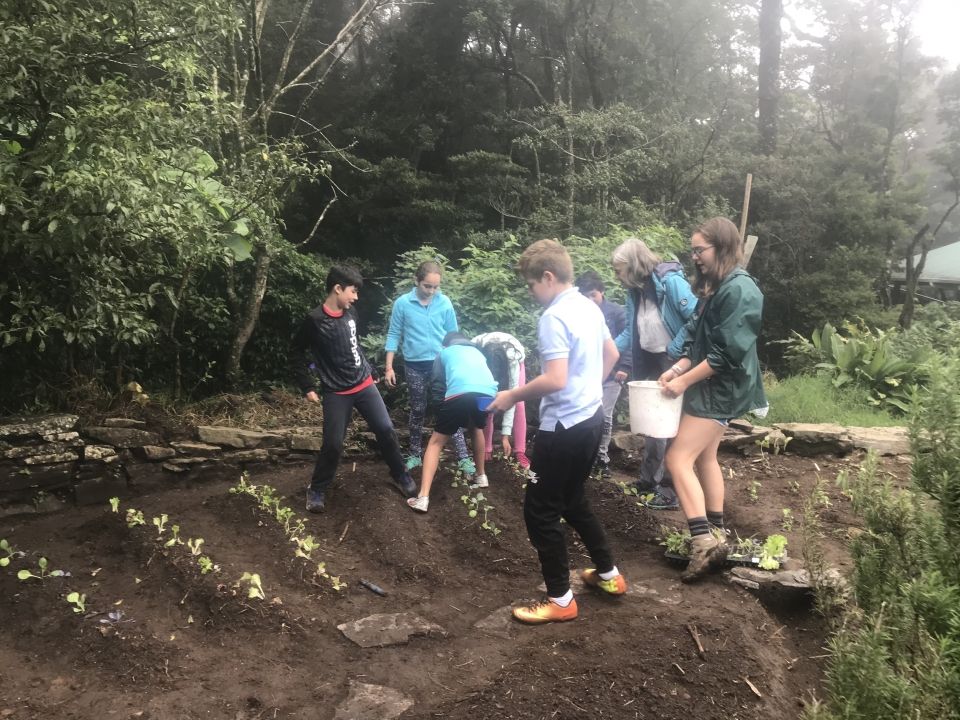
This internship helped me to explore a question that is often on my mind: How can humans have a positive impact on nature? As a student of environmental studies, I often hear ways people can reduce their negative impacts on nature, but we do not often think about how to give back to our environments. I think that replacing an aggressive and invasive grass with a diversity of useful plants -- many of them native -- is an example of a positive impact. Further, I hope it can help students learn how to have positive environmental impacts.
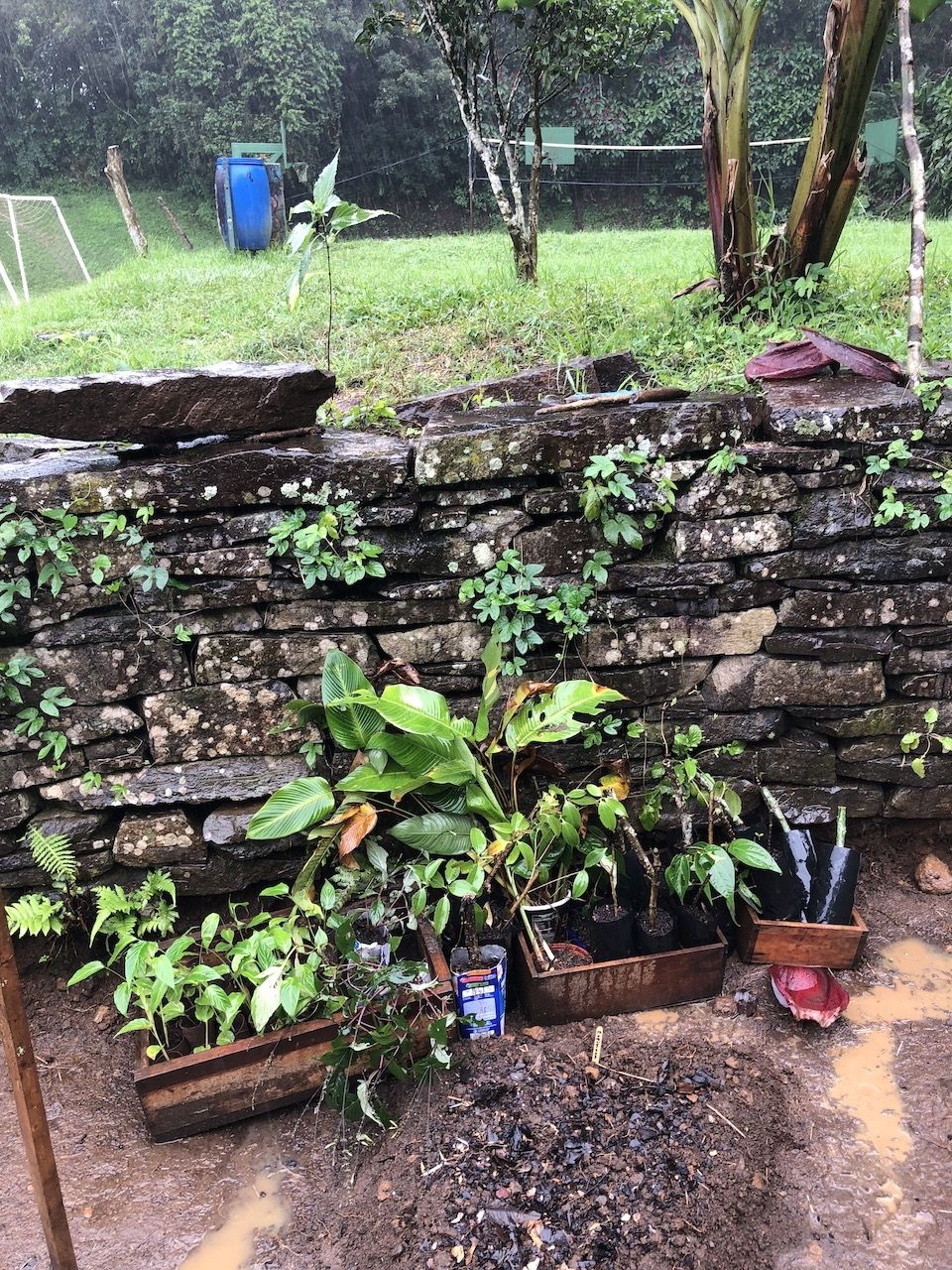
Doing this work, not only did I learn a lot about specific species and construction, but I also got to practice creating intentional community space. In a world where people are increasingly alienated from nature and sometimes each other, spaces for connection are truly precious. I hope the garden can bring people together and connect them with nature while I look for new opportunities to create sustainable spaces.
Related Posts
Costa Rica vs. Argentina: Which is Better for Study Abroad?
Imagine yourself sipping mate in a bustling Buenos Aires café or lounging peacefully in a hammock overlooking Costa Rica's lush rainforests. These contrasting scenes represent just a glimpse of the... keep reading
Top 10 Study Abroad Volunteer Opportunities with CIEE
Have you ever wondered if you could volunteer abroad? Perhaps you're looking into study abroad programs that provide international volunteer opportunities. If you’re itching to study abroad and truly make... keep reading
Recycling Internship with ADI San Luis
Written by Maya Peske (Cornell College), Internship in Sustainability and the Environment The road from San Luis up to Monteverde is well known by all of the people in the... keep reading

